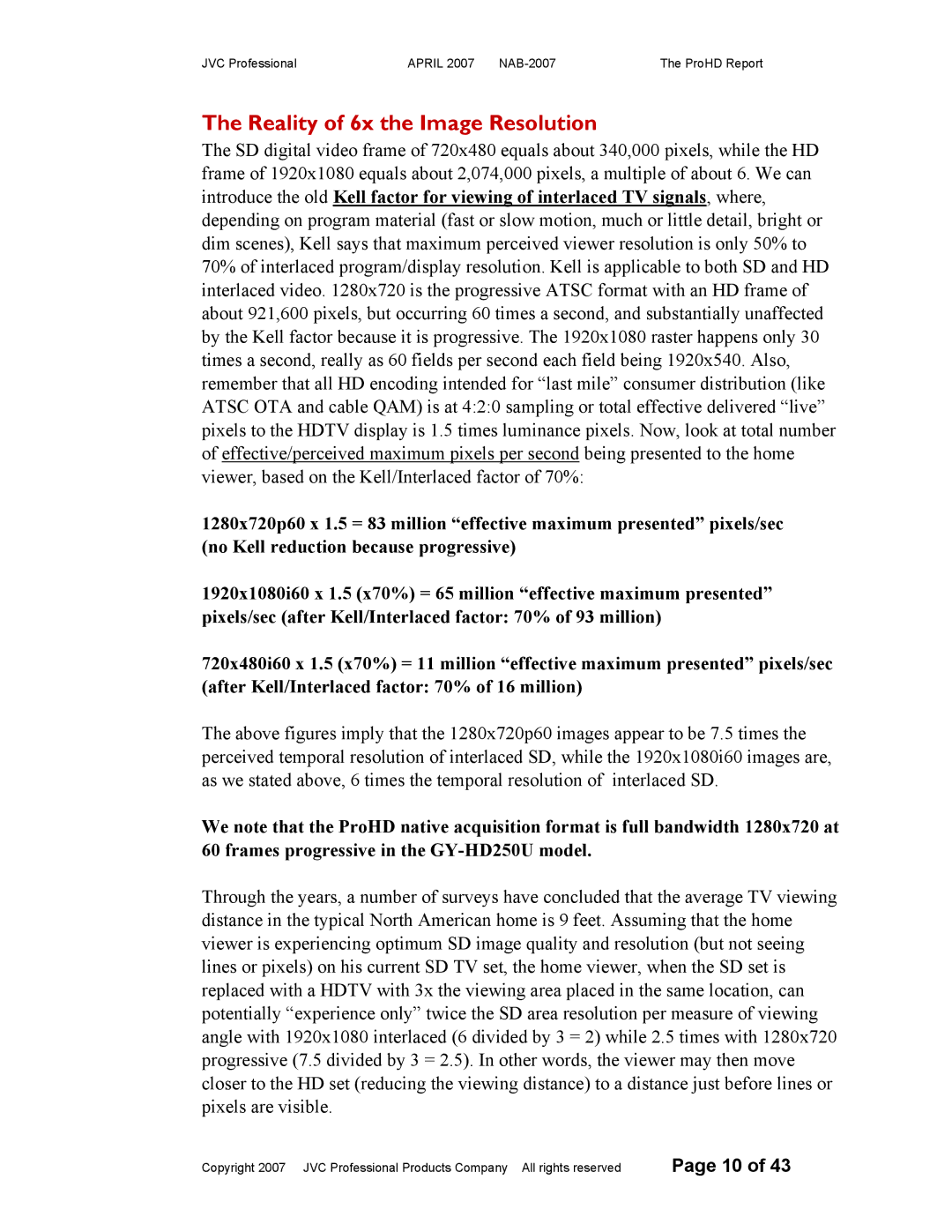NAB-2007 specifications
The JVC NAB-2007 is a notable entry in the world of professional broadcasting and production equipment, showcased by JVC at the National Association of Broadcasters (NAB) Show in 2007. This camcorder was designed to meet the demanding needs of videographers and broadcasters, emphasizing high-definition video quality and advanced technology.One of the standout features of the JVC NAB-2007 is its ability to capture high-definition video in various formats. It supports both 720p and 1080i resolutions, allowing users to choose the format that best fits their production needs. This flexibility has made it a popular choice among filmmakers, event videographers, and news organizations looking for quality in their content creation.
The camcorder utilizes JVC’s advanced HD CMOS technology, which enhances image quality by providing better low-light performance and reducing noise. This is coupled with a powerful optical zoom lens that enables users to capture detailed shots from a distance, making it ideal for dynamic shoots where proximity to the subject may be limited.
Another key feature of the JVC NAB-2007 is its ergonomic design, which is crafted for ease of use during extended shooting sessions. The camera is lightweight yet robust, providing operators with comfort and stability. Additionally, the user interface is intuitive, allowing for quick adjustments to settings without disrupting the workflow.
Built-in stabilization features further enhance the usability of the JVC NAB-2007, ensuring that footage remains smooth even during handheld operation. This is particularly advantageous for documentary shoots or on-the-go filming where traditional stabilization rigs may be impractical.
Connectivity options are expansive on the JVC NAB-2007, including HDMI and component outputs, enabling seamless integration with various editing systems and broadcast environments. The camcorder also includes features for live broadcasting, making it versatile for both recorded and real-time production scenarios.
In summary, the JVC NAB-2007 encapsulates a blend of impressive features, cutting-edge technology, and user-centric design, making it a suitable choice for professionals in the broadcasting and film industries seeking reliable and high-quality performance in their equipment.
